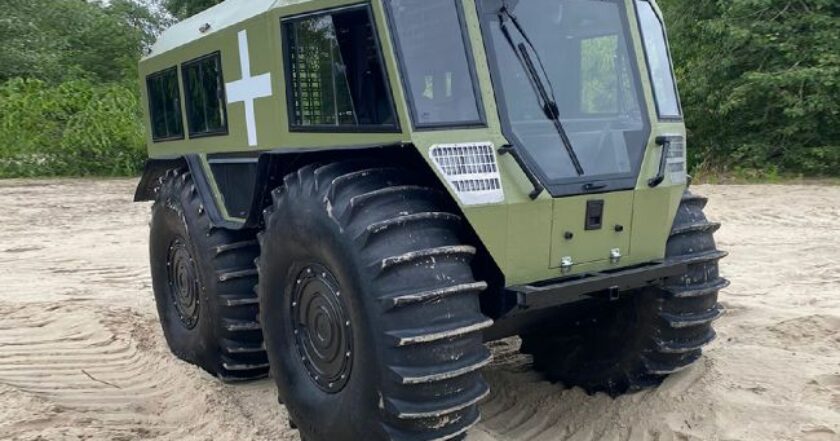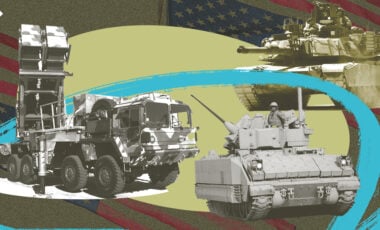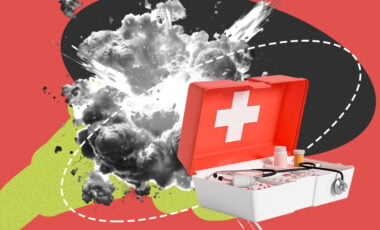Solutions to win: Ukraine's armed forces to deploy revolutionary amphibious all-terrain vehicle

Photo: mil.gov.ua
The Ukrainian army has officially adopted the one-of-a-kind amphibious all–terrain vehicle "Takha." This groundbreaking vehicle is the result of innovative work by domestic manufacturers.
The press service of the Ministry of Defense of Ukraine reported that.
What is the problem?
Amidst the ongoing war with Russia, it has become increasingly evident that Ukraine needs to prioritize the development of its own military vehicles. This is not only a matter of national pride but also a necessity for the country's defense capabilities. The recent acceptance of the domestically produced amphibious all-terrain vehicle "Takha" into service with the Ukrainian army is a step in the right direction. Still, more must be done to win the full-scale war with Russia.
First and foremost, relying on foreign suppliers for essential military equipment is a risky and unreliable approach, especially in times of war. The unpredictable nature of international politics means that access to foreign military technology and spare parts can be cut off anytime, leaving Ukraine vulnerable and defenseless.
Moreover, developing and producing Ukraine's own military vehicles would boost the country's economy and create job opportunities for Ukrainians. In the long run, this would reduce the dependence on foreign suppliers and strengthen our self-sufficiency as a nation. It would also lead to technological advancements, as Ukrainian engineers and scientists would be forced to innovate and improve upon existing designs to meet the demands of the war.
What is the solution?
The Ukrainian army has obtained a one-of-a-kind amphibious all–terrain vehicle known as "Takha." It is a distinctive creation of Ukrainian producers.
An amphibious all-terrain vehicle in war is needed for:
- Traversability: it can move over various types of terrain, including water, allowing it to overcome obstacles such as rivers and swamps.
- Mobility: it quickly reacts to changes in the combat situation, transporting equipment and personnel to the necessary positions.
- Versatility: it is used for cargo transportation, medical evacuation, and reconnaissance missions.
- Security: it ensures protection of personnel during movement in dangerous areas.
- Logistics: it secures the rear by delivering resources to remote or hard-to-reach areas.
These characteristics make the amphibious all-terrain vehicle essential to modern military operations.
How does it work?
The Ukrainian all–terrain vehicle "Takha" can operate on any type of terrain, including ice-covered water.
Its compact size and ability to turn in place allow efficient maneuvering in tight spaces.
The main advantages of "Takha" are the following:
- It overcomes obstacles higher than 1 meter;
- It can carry up to 1 ton of cargo or up to 10 passengers;
- It can speed on land – up to 40 km/h, on water – up to 6 km/h;
- It can work at one gas station for more than two days.
As the Ministry of Defense explained, an amphibious all–terrain vehicle exerts less pressure on the surface than a human foot, allowing it to traverse through loose and unstable ground.
This transport is already used at the front for:
- evacuation,
- delivery of ammunition,
- food transportation in rugged terrain conditions where other military equipment cannot cope.
For reference:
An amphibious vehicle is a versatile vehicle designed to move on land, water, and air. It has one or more engines and is usually created by military institutions around the world. While most are meant for military use, some, such as amphibious tour buses, can be used by civilians.
It should be noted that the Ministry of Defense recently announced that the new "Black Widow" drone-bomber was put into service with Ukraine's armed forces.
Earlier, the head of the Ukrainian Security Service revealed that Ukraine has produced a one-of-a-kind surface drone called "Sea Baby." The drones are made in the country, but the facilities are underground.
In addition, Ukraine has established serial production of the domestic analog of Shahed drones. Dozens of such drones can be produced in a month.
According to Kyrylo Budanov, the head of Ukrainian intelligence, Ukrainian drones are now capable of striking targets in Russia up to 1,800 km from the Ukrainian border.























































